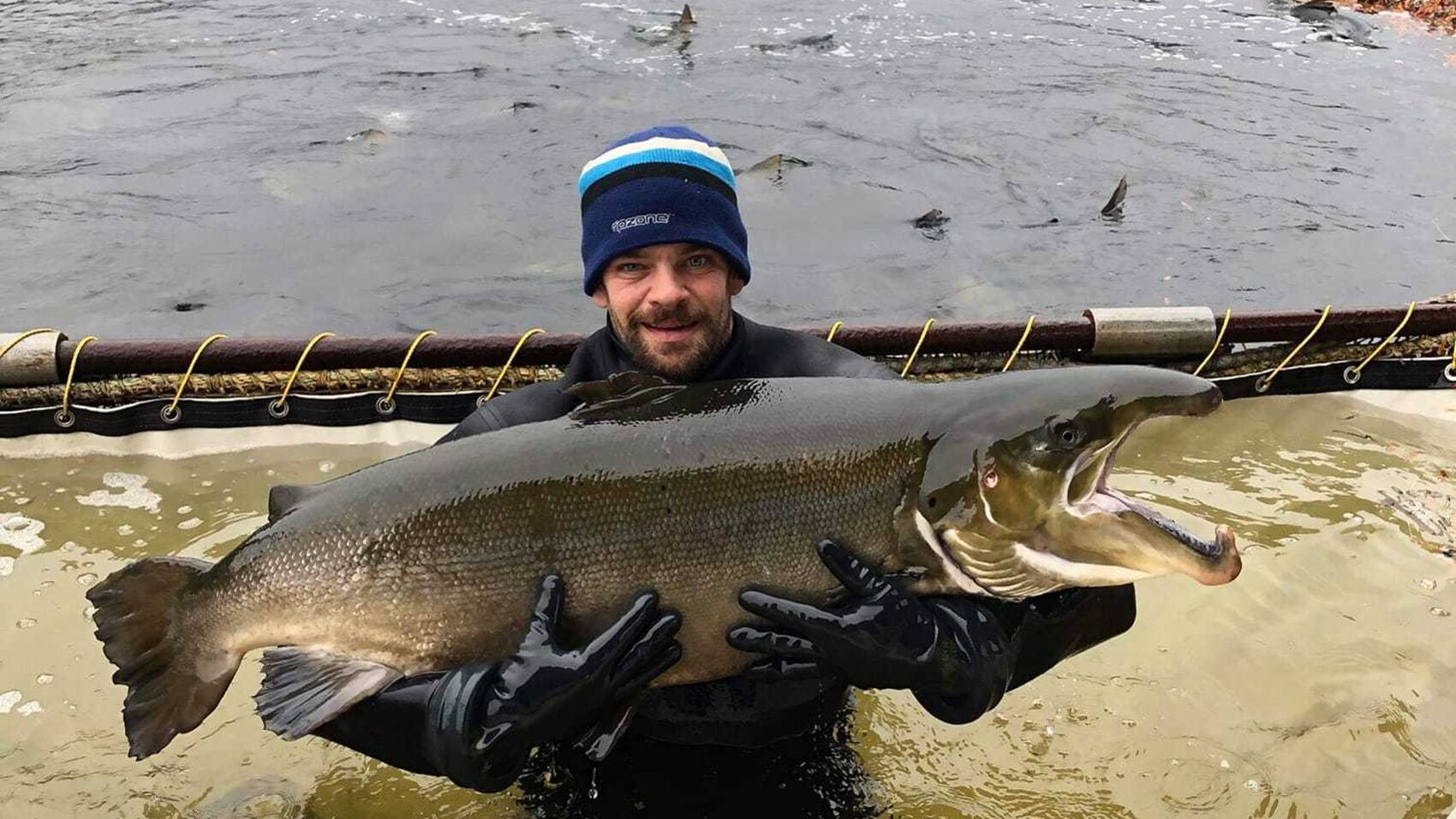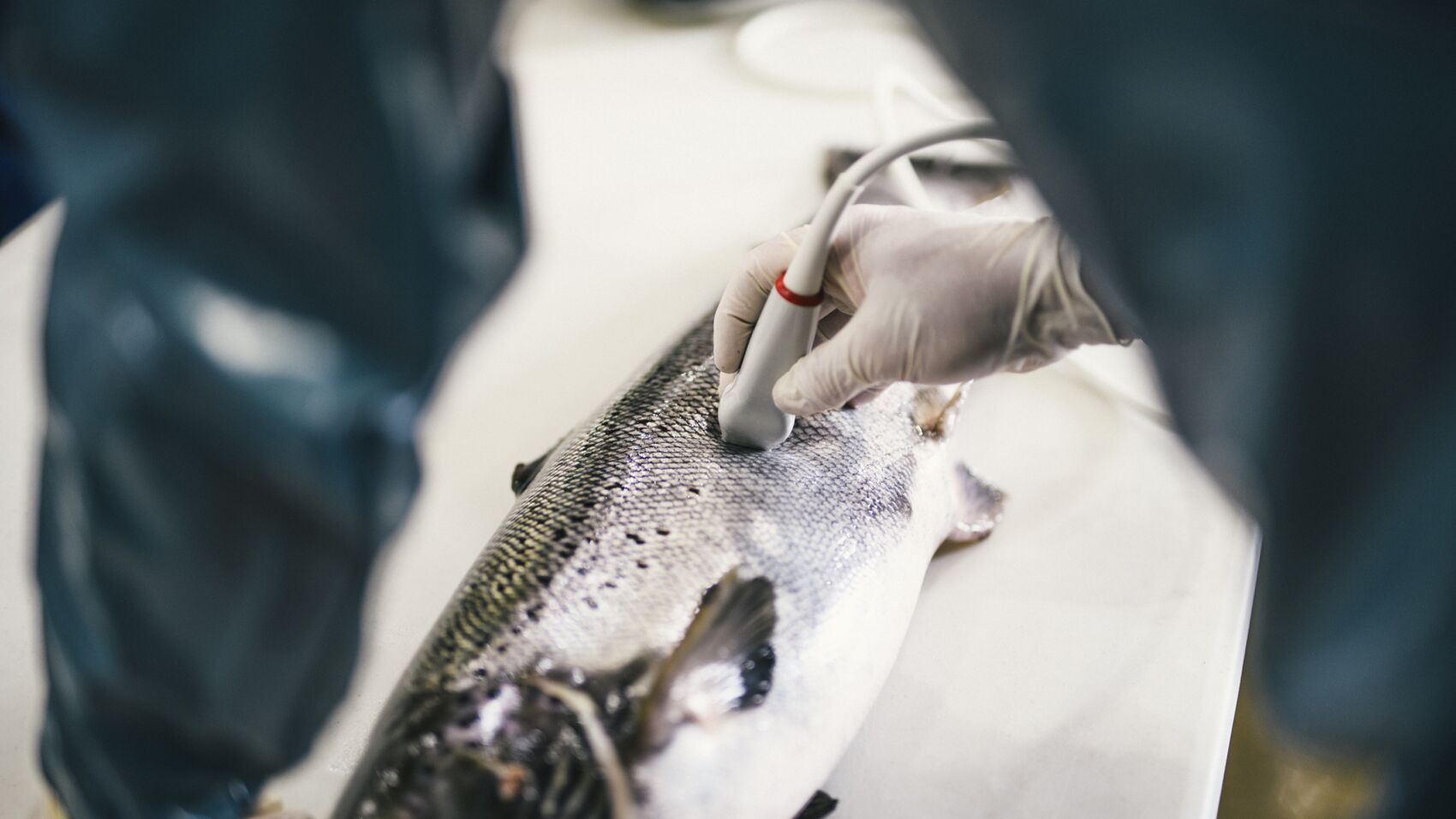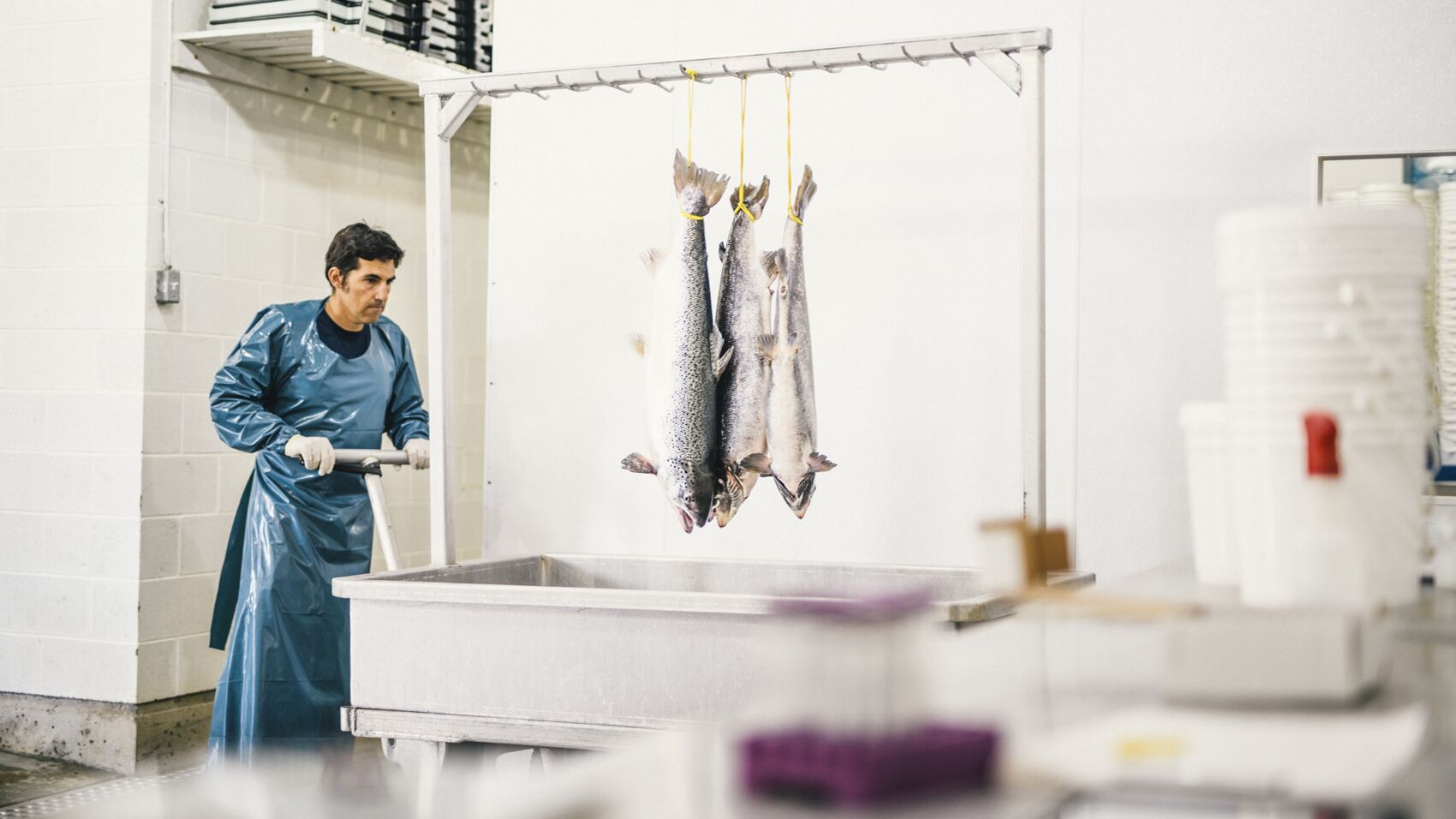Value Chain
Genetic and brood stock
Broodstock fish are raised for approximately 32 months and get a special diet for optimizing the production of eggs and milt (sperm).
The broodstock we use in salmon aquaculture stems from fish families that are specially selected based on genetic make-up. Originally, these fish were selected from wild fish caught from various rivers and populations. In Norway, broodstock from more than 40 rivers formed the basis for the first generations of salmon aquaculture.

Cermaq has a breeding nucleus consisting of many hundreds of families of salmon. Each family group has sisters and brothers that show desirable traits. Desirable traits may include a high growth rate, resistance to disease, late maturation, good flesh quality and other properties. In turn, these traits are measured in the descendants of the breeding nucleus, which then are part of the selection process for the next generation.

Fertilized salmon eggs are produced by stripping eggs and milt from the broodstock. The harvested eggs and milt are mixed and the fertilized eggs are sent to our hatcheries.Many thousands of eggs can be fertilized by using just a few milliliters of milt.

When we produce fertilized egg from our own broodstock we can also have complete traceability of our fish through their DNA.